Is America Following the Same Path as Japan?
by Comstock Partners
Ever since the U.S. financial crisis in 2008 there have been many comparisons to Japan and their "lost decade." Most comparisons mark the start of each financial crisis as the end of 1989 for Japan and 2007 for the U.S. We believe each deserves some clarification: Not only does the lost decade need to be pluralized, but the U.S. financial crisis is more appropriately dated to 2000, when we entered our secular deflationary bear market in the wake of the bursting of the dot-com bubble.
The resemblance between two of the greatest financial stock market bubbles in history cannot be easily dismissed. Japan’s financial bubble (peaking in late 1989) and the U.S. stock market bubble (peaking in early 2000) compare with some of the greatest bubbles in history such the tulip bulb craze, the British East India Company collapse and the South Sea bubble. The Nikkei quadrupled in five years to peak at 39,000 the last day of 1989. It collapsed into a two- decade period of down-trending volatility that reached historic proportions before winding up around 10,000 presently (75% below the high). The U.S. market rose 3 1/2 times in the four years leading to the high of 2000. The P/E ratios for U.S companies broke out of an average trading range of 8-10 at major bottoms and 20-23 at major tops for the prior 80 years, before more than doubling to close to 50 times earnings for the major averages and 200-400 times earnings for many high tech and dot com companies—and this excludes many companies with no earnings at all. In fact, Japan’s stock market in 1989 was the only other major market that could be compared to it in terms of irrationality. In the same vein, the Japanese real estate market was the only major market that could be compared to the real estate bubble in the U.S. six years after the bursting of our stock market. In fact, Japan’s real estate bust was probably worse than the U.S. since the ground under the Imperial Palace was estimated to be worth almost as much as all the land in California at the time.
SIMILARITIES
Let’s take a look at the similarities of the busts in both nations following the respective peaks of their cycles. We believe you will be amazed at just how similar our credit crisis was to Japan’s.
Total Debt/GDP
The total debt of Japan relative to GDP in late 1989 was 270%. The U.S. total debt relative to GDP in 2000 was 270%. The total debt eight years later was 385% (1998) for Japan and 375% for the U.S. (2008). Presently, the total debt to GDP in Japan is 325% and it would be much lower if government debt hadn’t tripled while private debt (mostly non-financial corporate) declined. Presently, the total debt in the U.S. is 360% and is probably on track to lower numbers as our government debt is rising while the private debt (mostly household debt) is declining.
(click image to enlarge)
Government Debt/GDP
Japanese gross government debt was 50% of GDP in 1989 when they first entered into their secular bear market. It is now close to 200% as the government tried to stimulate the economy as the private sector deleveraged. The U.S. gross government debt was 57% of GDP when we first "hit-the-wall" and is now 90% and growing very fast as the government deficits have been in the area of $1.3 to $1.4 trillion a year for the past two years. We suspect that the U.S. government debt-to-GDP could easily match the tripling of Japan’s.
Sector of Private Debt that Started the Crisis
The private debt in Japan was the driving force for the secular deflationary bear market. However, the tremendous excess debt wasn’t in the household sector as it is in the U.S. It was in the non-financial corporate debt side which tripled from 1980 to 1989 (remember the purchases of Pebble Beach and Rockefeller Center) and now has declined by about 33%. The actual numbers were 250 trillion JPY in 1980 to 750 tn. JPY in 1989 and back down to 500 tn. JPY presently.
The private debt in the U.S. that was the driving force for the secular deflationary bear market was largely in the household sector. The household debt as a percentage of GDP was approximately 50% for the three decades of the 1960s, 1970s, and 1980s. This was before the households decided that they wanted more house or homes and more goods and services than they could afford. Consequently, household debt rose to 100% of GDP by 2008. In actual numbers household debt averaged around $1 trillion during the 1960s, 1970s, and 1980s before rising to about $9 trillion in 2000 (or 68% of GDP) and $14.5 trillion by 2008 (100% of GDP). Since the deleveraging started in 2009 the household debt subsequently dropped about $1 trillion over the past year. If we used household debt relative to disposable personal income (DPI) the numbers would be very similar-averaging 60% during the 60s, 70s, and 80s, and 90% in 2000, before more than doubling to over 130%. It just recently declined to about 120% of DPI during the deleveraging (including both defaults and debt pay downs) starting in 2009.
Both Stock Markets Did Extremely Well Prior to the Financial Crisis
Japan’s stock market almost quadrupled during the 5 years prior to their peak year of 1989 (the Nikkei rose from 10,000 to 39,000). This was just before their deflationary bear market started. The U.S. stock market rose about 3.5 times (450 to 1520 on the S&P 500) during the four years prior to the start of our secular bear market starting in 2000. The NASDAQ rise was even more staggering: it rose from about 650 in 1995 to 5000 in 2000. The volatility of both markets was staggering once the secular bear market started. The Nikkei dropped from 39,000 to 14,300 (down 63%) in 1992 with few rallies in between. It then traded in a range of about 13,000 to 22,600 for the next 10 years, before trading in a lower range of 7,000 to 18,000 from 2003 to the present. It is now trading at about 10,000, down about 75% from the highs. At the low the market was down 82%.
The U.S. stock market was also very volatile after the peak reached in 2000. The S&P 500 dropped from 1520 to 800 from 2000 to 2002 without any significant rally. It then rose in 2007 to a new high of 1570 without much of a correction. This was accompanied by a housing bubble that was second only to the Japanese real estate bubble in the late 1980s. Once the housing bubble burst, the S&P 500 dropped to 670 in March of 2009 before rising again to the 1200 level presently. The NASDAQ was even more volatile dropping from 5000 to less than 1500 twice before rebounding to 2550 presently.
The most important thing to glean from this is the ending level of Japan’s major market index, down 75% from the high compared to the S&P 500 down only about 25% at this time. If we are following in Japan’s footsteps this does not bode well for the U.S.
Both Countries Are not Producing Jobs With Each Attempt at Recovery
It is clear that the U.S. is presently in a jobless recovery and that the structural unemployment will not be easy to remedy. The U.S. unemployment rate rose from about 4% in 2000 to 9.6% presently (and over 17% including the underemployed and those who dropped out from discouragement). Even though we have just started adding new jobs, we are not adding enough to lower the unemployment rate. Japan seems to have experienced the same problem since their unemployment rate rose from a little over 2% in 1989 to 5% presently. The number of unemployed rose from 1.7 million to 3.3 million presently. The similarities between these two countries are amazing.
(click image to enlarge)
Both Countries Are Caught in a Liquidity Trap
The financial crisis that crippled Japan’s once great economy seems to be a reflection of what is in store for the U.S. Many would say that Japan did not move as quickly as we did with our TARP, the stimulus package of $787 billion, home mortgage modification, cash for clunkers, tax credit for first time purchases of homes, bailouts of the automobile and financial area and massive easing by the Fed. However if you believe, as we do, that the start date of our crisis was 2000 and not 2008, you can see that we postponed the inevitable for 8 years while we had a Fed-sponsored housing and stock market bubble that should have been addressed much earlier. Indeed, we also looked the other way while banks packaged and sold loans across the globe. We are now in the same process as Japan in denying that problems within the banking system still exist as we prop up a crippled banking system until we have the courage to drive them to restructure, consolidate, get nationalized or sold.
(click image to enlarge)
Japan did quite a bit of infrastructure fiscal stimulus early on but decided to raise taxes and interest rates as soon as they got the first indication of growth returning. And they didn’t start Quantitative Easing (QE) for 7 years after their crisis started. However, their QE was not just confined to sovereign debt and mortgage- backed securities. The Bank of Japan (BOJ) did whatever was necessary to stimulate the economy, including purchases of common stocks, real estate, and anything else that they thought would work. Their goal was to generate a wealth effect by increasing the assets that their citizens owned. This is exceedingly similar to Bernanke’s plan for the U.S. It didn’t work in Japan and we doubt it will work for the U.S. The primary problem in both countries is a lack of confidence intertwined with a weak housing market, high unemployment, major excess capacity and a scarcity of credit after the volatility in the stock market and the real estate market wiped out many of the citizens in one fell swoop. This lack of confidence leads to anemic demand and produces price declines. The price declines lead to deflationary expectations permeating the thinking of many consumers. Furthermore the central banks have used all of their conventional weapons and can no longer lower interest rates to combat the malaise. This is called a "liquidity trap," whereby consumers, corporations, and lenders sit on whatever money they have and refuse to borrow, spend, or lend since they finally realize that by doing this in the past is the cause of their anxiety presently.
The Fed and BOJ can only create more reserves! They can’t create M-1, M-2, MZM or any other definition of money; they can only hope the reserves they create will generate some velocity and multiplier effect to get more inflation (especially inflation in housing which will help out the banks. However, there can be no stimulative effect if consumers will not borrow and the banks will only lend to the highest quality borrowers (who for the most part are not interested in borrowing). It is nothing more than the expression; "you can lead the horse to water…
(click image to enlarge)
Of all the things that lead us to believe we are potentially following Japan down the long deflationary path, it is the "Liquidity Trap" discussed above those concerns us the most.
Inflation Rates
The inflation rate of the U.S. has not gone negative yet, but it took Japan ten years to go negative. Japan’s core inflation actually went up from ’89 to ’92 (1% to 2.5%) before going into negative territory in 1998. It has yet to recover from negative territory, fluctuating between negative 1% to flat. The U.S. core inflation rate declined from 3% in 2006 to 1% now, but has never reached the deflation of Japan. Can the U.S. avoid the deflation trap? We don’t think so.
DIFFERENCES BETWEEN U.S. & JAPAN
Response Time
Many point to response time as the reason why we won’t be following Japan down the deflationary path. We disagree with this because we believe the comparison should start with the U.S. in 2000 and not 2007-2008. We understand that Japan didn’t start their quantitative easing (QE) for 7 years after the peak, but if the U.S. peaked in 2000, it also didn’t start QE or any other fiscal stimulus until 8 years later.
Global Scope
The U.S. situation is more global in scope while Japan was contained mostly within their own country. There is no question that when Japan peaked they were still able to sell their goods and services to a prosperous global economy. This should have been extremely beneficial to Japan since they had trade surpluses and their economy was mostly dependent upon exports. If anything, this made it a lot easier for Japan to grow out of their problems and should make our exit from this morass to be more difficult.
More Broad Based Bubbles
Japan’s bubble was more broadly based since it consisted of both residential and commercial real estate as well as the stock market, while the U.S. was mostly based upon residential real estate and the stock market. Of course, we are not sure of the end result of our commercial real estate market. There will be a substantial amount of refinancing coming due over the next couple of years and this could be a major problem if we go into a double dip.
Older Population
Because of Japan’s restrictive immigration policies and low birth rates, their aging population is greater than the U.S. In fact, the Japanese have an older population with 25% over the age of 65. The U.S. has about half of Japan’s population over 65 at 12.5%. An older population is a deterrent to production and productivity. It also requires fewer and fewer workers to support more and more retirees. So, even though the U.S. and Europe have an aging population that restricts growth, their problem is only half the problem in Japan.
Saving Rate in Japan was much Higher than the U.S.
Japan’s savings rate was 13% when they peaked and has declined to about 8% in 2007 and presently is 10%. The U.S. savings rate was about 2% when we "HTW," dropped to a negative rate, and has recently risen to about 5.5%. This makes sense as the household sector deleverages and saves in order to rebuild their balance sheets. Japan had the advantage here since it was able to support consumption by decreasing the savings rate. On the other hand U.S. consumers have to save more, thereby hampering spending. This could be a major negative for the U.S. as it will exacerbate any potential deflation and negatively affect the growth rate of overall consumption.
(click image to enlarge)
Different Private Sector Debt Drove the Crisis
As we stated earlier in this report, Japan had much lower household debt than the U.S., and the U.S. had much lower corporate debt than Japan. It is therefore the household debt that has to be deleveraged in the U.S. (and that is taking place right now-with household debt down about $1 trillion from the peak of $14.5 trillion). In Japan, it was the non-financial corporate sector debt that was responsible for driving them into financial crisis and that had to be deleveraged. It did decline by about 33% from 750 trillion Japanese Yen (JPY) to 500 trillion JPY presently (see third image above).
We believe that the deleveraging of the consumer by the U.S. is likely to be a more damaging dynamic than corporate deleveraging given the social impacts and dislocations that occur in personal vs. corporate bankruptcies, etc.
U.S. Finances Its Deficits Abroad While Japan Has Surpluses and Finances Domestically
Japan has a large advantage by being able to finance domestically while the U.S. is forced to sell their Treasury securities abroad (mostly to China and Japan).
Entitlements
We believe the entitlements problem with the U.S. could not possibly be as bad in Japan. After all, the U.S. has anywhere from $62 trillion (Peterson Institute estimate) to over $100 trillion of unfunded liabilities (Congressional Budget Office estimate), depending upon which estimate you want to use. But even at $62 trillion we are in a tremendous hole. Japan has a population that is aging faster than the U.S. and has a national health care plan, but has health care costs per person less than one-half that of the U.S. This could be the most significant difference between the two countries and could be the factor that would make the difficulty of the U.S. escaping from our deflationary secular bear market before Japan’s two decades almost impossible.
The best comparison we could find as to the liabilities of the two countries comes from a paper entitled Japan’s Public Pension: The Great Vulnerability to Deflation by Mitsuo Hosen, who is an Executive Research Fellow at Economic and Social Research Institute Cabinet Office. It concludes that social expenditure of GDP as of 2007 was 23.4% for Japan and 27.5% for the U.S. With the age differential as great as it is, it looks like both countries have major unfunded liabilities and this is clearly a significant problem for both countries.
Defense Spending
The amount of money the U.S. spends on defense dwarfs Japan as well as virtually any country on the planet. Our military budget totals close $750 billion and that is greater than every other country combined.
Innovation-a Very Important Concept for Both Countries that Doesn’t Fall Under Similarities or Differences
Innovation in Both Countries
Both Japan and the United States have shown incredible innovative talent over the past. Japan looked like it was going to take over the world in the late 1980s with many innovations and manufacturing capabilities (especially in automobiles). Then they got greedy and borrowed and spent money they didn’t have. U.S. innovation has also been amazing with the development of microprocessors, computers, biotechnology, wireless communications, the internet and smart phones. It is also true, however, that much of our growth over the past two decades has been propelled by excessive debt, growth of paper wealth, construction of un-needed capacity and building millions of homes that people could not afford.
Both countries now have an opportunity to lead in recognizing and discovering the wisest choices for new sources of energy (especially green energy). Replacing our energy needs with alternative energy sources should be a number one priority for both countries and could be the solution to the deflationary quagmire we find ourselves in presently. If we lag behind, we will both continue to be reliant on expensive imports of energy from sources that have not been what you could call friendly to either country in the past.
CONCLUSION
This report shows just how similar these two countries were before generating so much debt in the private sector that drove them into a financial crisis that may take both countries multiple decades to extricate themselves. We believe both countries are in secular deflationary bear markets that are likely to only be resolved through broad based restructuring of balance sheets and social benefits. Of course, if either country is able to show the innovative abilities that we have in the past, we could escape this very difficult situation much more quickly than this "special comment" concludes.
Japan has a one decade start on the U.S. so we expect to stay in this quagmire for years to come. The similarities in this report are amazingly close if we start with what we believe to be the best dates when each country’s secular bull markets peaked (1989-Japan, 2000-U.S.). Even when you study the differences you have to conclude that most of the differences will make the extrication from deflation even more difficult for the U.S. than Japan. (The aging population of Japan, and financing abroad vs. domestically are the exceptions to that.)
As we have stated many times, we really hope we are wrong with these conclusions and hope that the innovative capabilities of both (or either) country could make a big difference!! All in all, however, we believe that the U.S. faces a long period of below-average growth, weak economic recoveries and more frequent recessions that justifies lower p/e multiples in stocks.
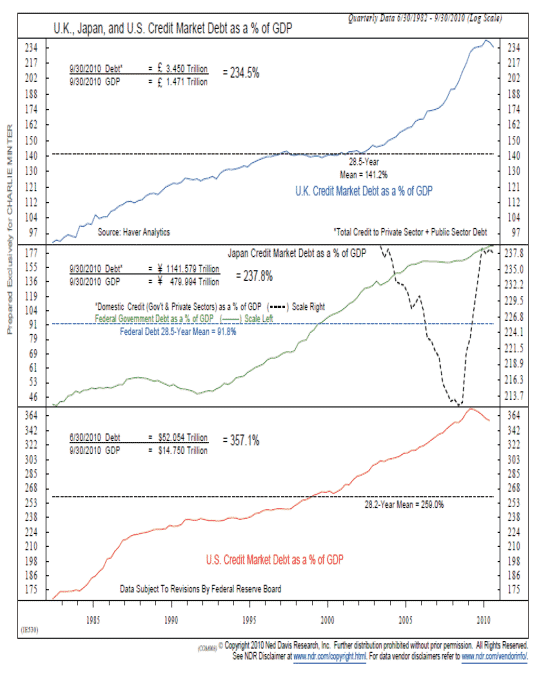
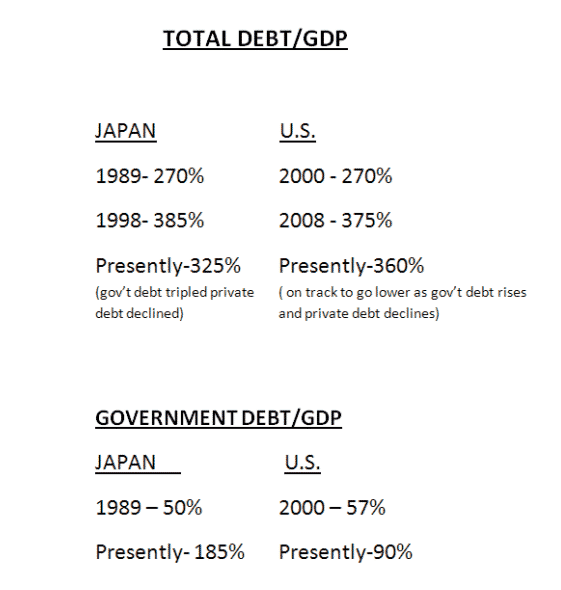
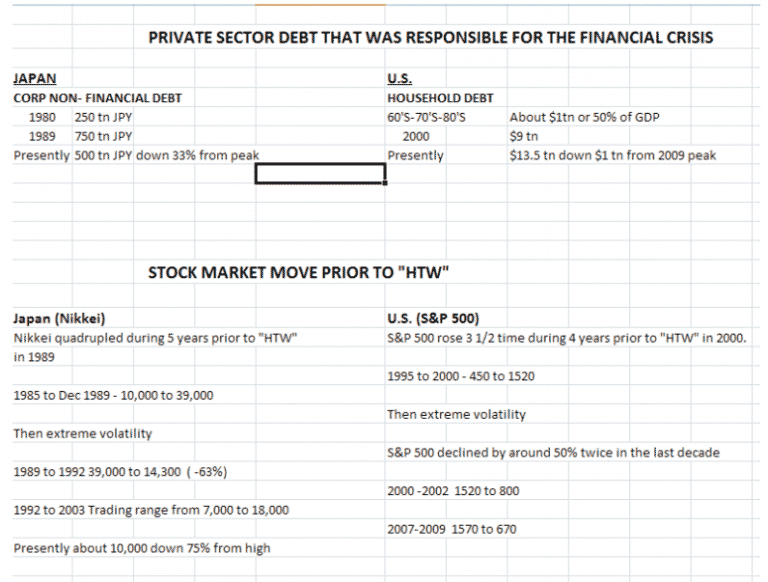
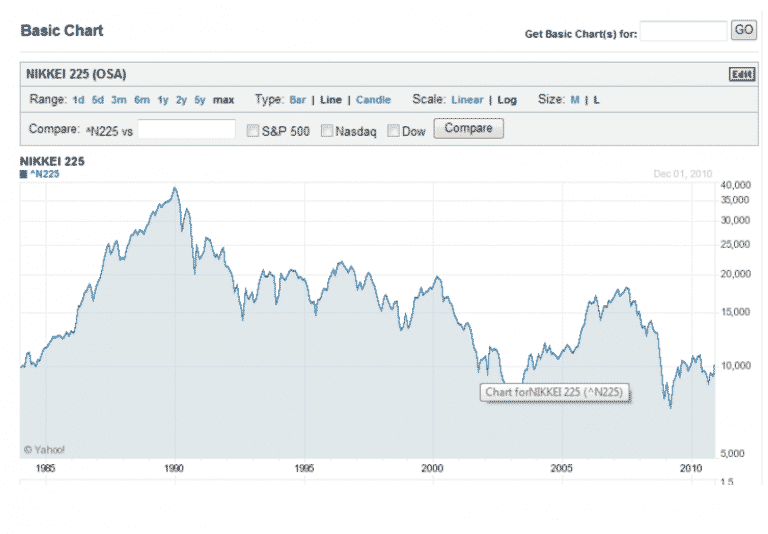
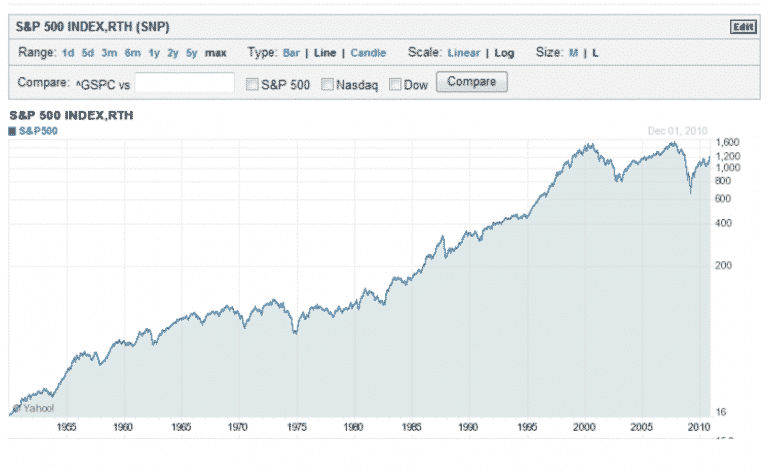
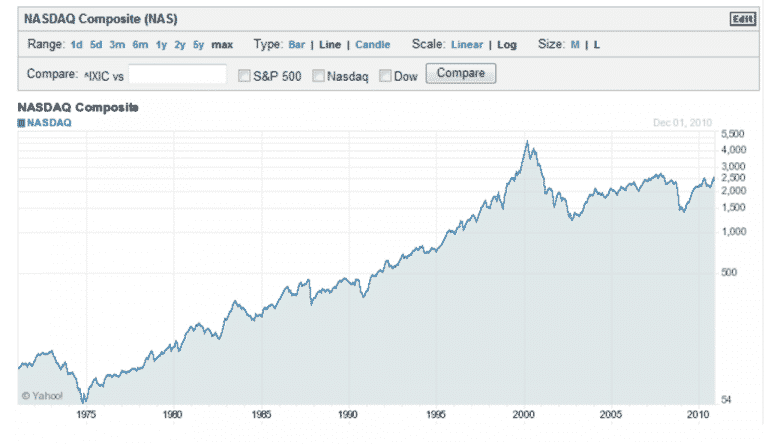
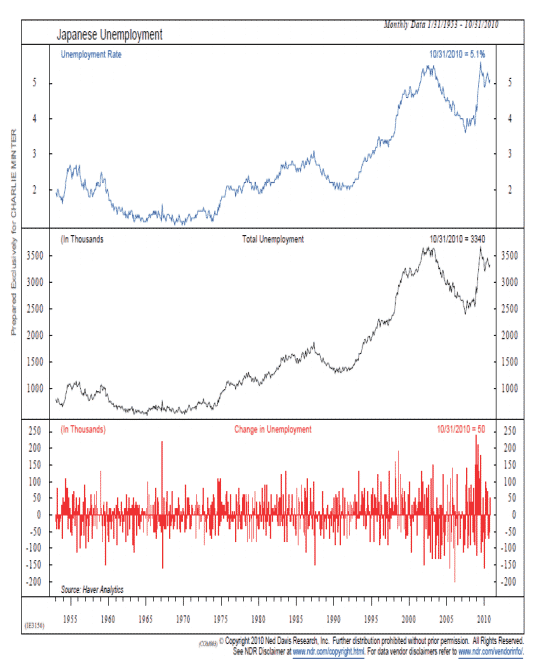
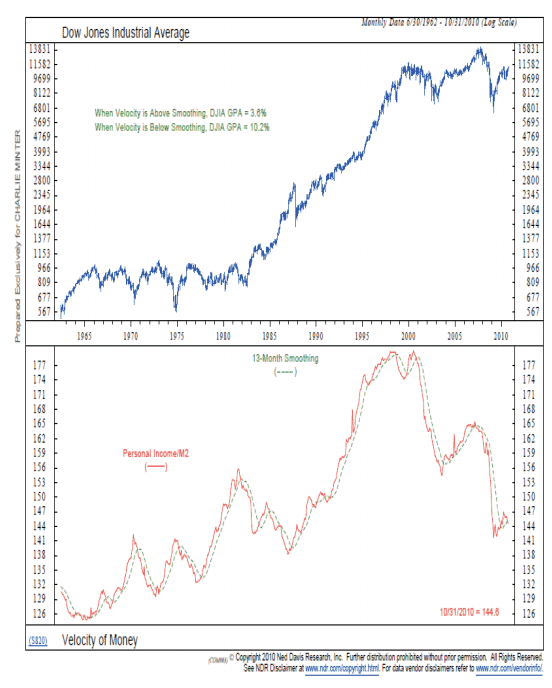
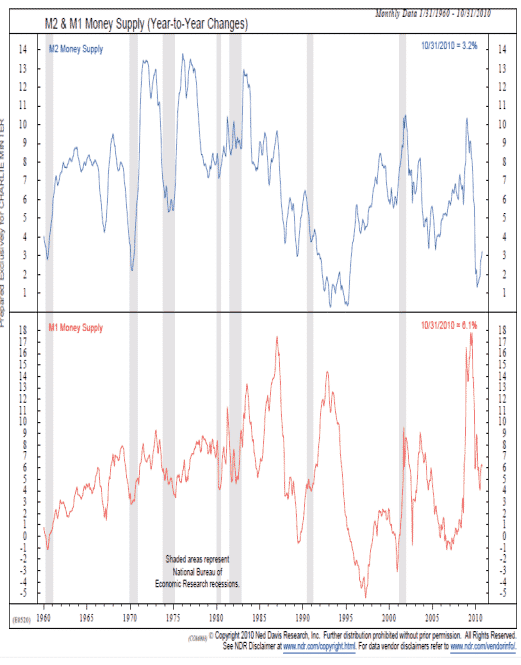
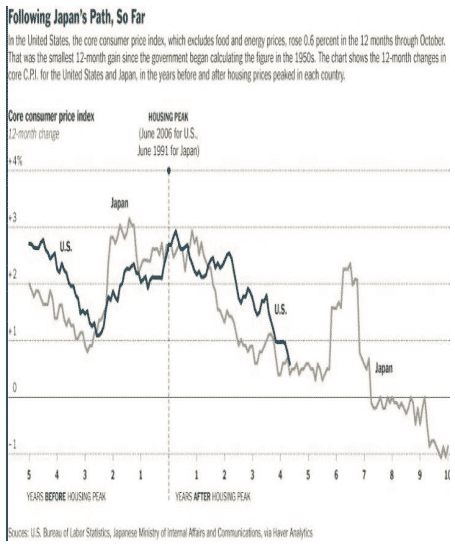
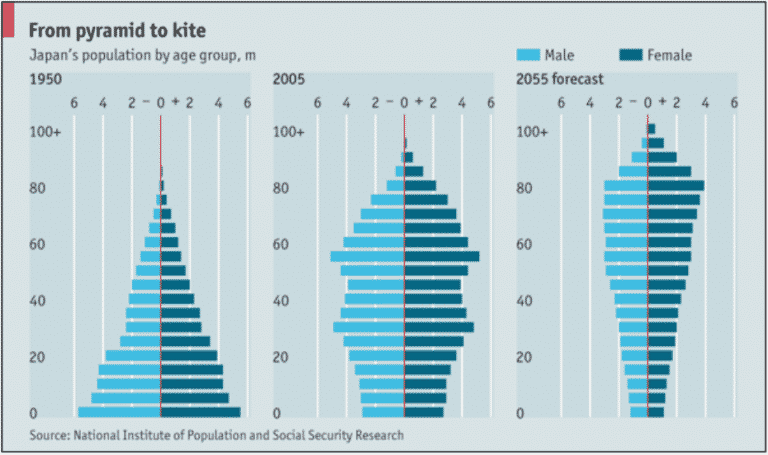
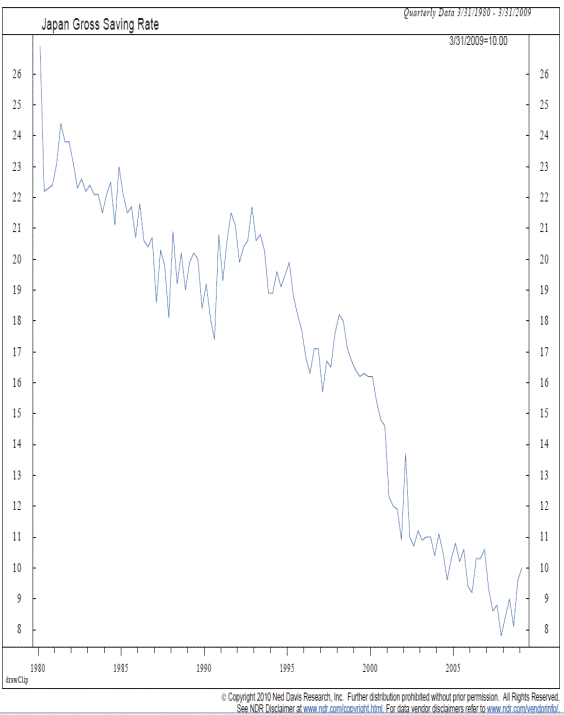
Comments are closed.